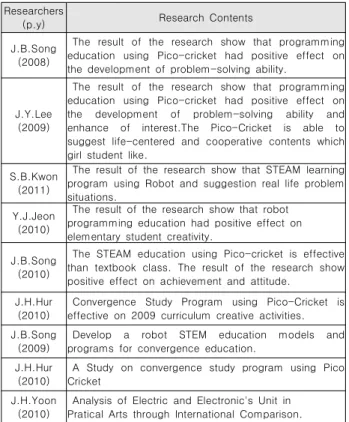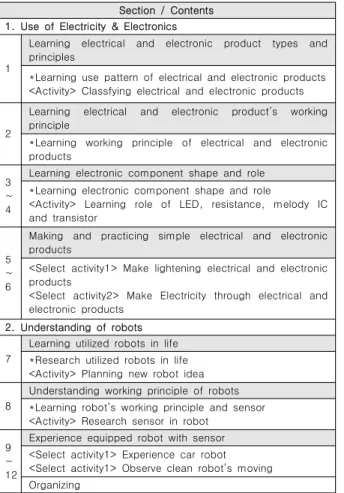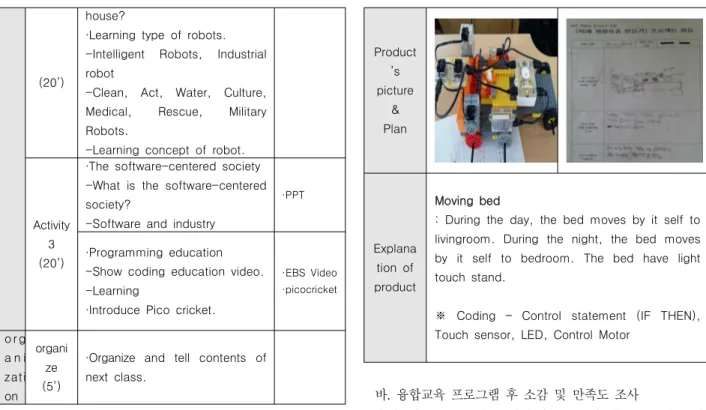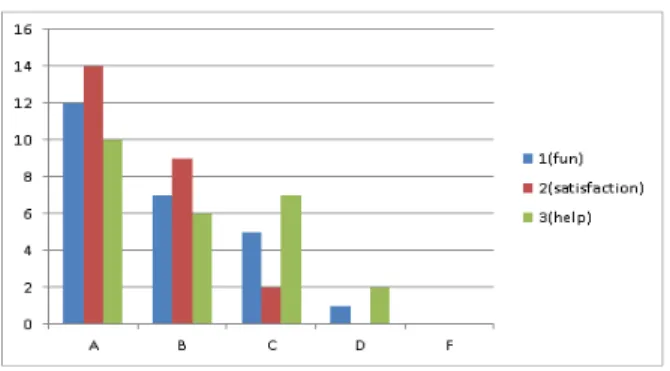Development of Convergence Education Program of the ‘Life and Electricity․Electron’ Unit in Practical Arts Textbook to Enhance
Computational Thinking
1
전체 글
1
수치




관련 문서
The purpose of this study is to investigate the effects on elementary school students' academic English improvement, interest, and self-confidence through the
This study was conducted to investigate the effects of 12 weeks after school physical activity program on body composition and PAPS in obese elementary
The Effects of Culture Learning Through American TV Dramas on English Listening, Vocabulary Skills and Interest of Korean Elementary
Therefore, this study investigated the interest, satisfaction and participation in STEAM of middle school students centering on programs where music education
Four volumes of the text are used as a core text to instruct third and fourth year elementary school students in the rudiments of Korean language related to daily
Department of Electrical Technology Convergence Engineering, Graduate School of Industry Technology
The Study about Middle School Students' Self-Identity And Dwelling-Identity Development Through House-Meaning Education based on Narrative.. (with Life
Second, the seventh educational course applied to the practical curriculum in 2001, and it applied to the first- grade students of high school , so as